
lincoln auto greaser manual
This manual serves as a comprehensive guide for understanding‚ installing‚ and maintaining the Lincoln Auto Greaser system‚ including models like QuickLub and P203‚ ensuring optimal performance and safety.
Purpose and Scope of the Manual
This manual is designed to provide users with a clear understanding of the Lincoln Auto Greaser system‚ ensuring safe and efficient operation. It serves as a detailed guide for installation‚ maintenance‚ and troubleshooting‚ tailored for both novice and experienced users. The manual covers various models‚ including QuickLub and P203‚ and addresses key aspects such as system setup‚ electrical connections‚ and grease reservoir management. It emphasizes safety precautions‚ proper handling of lubricants‚ and best practices for optimizing performance. By following this manual‚ users can ensure their Lincoln Auto Greaser operates effectively‚ reducing downtime and extending equipment life. The scope includes troubleshooting common issues‚ adjusting settings‚ and integrating the system with other lubrication setups‚ making it an essential resource for maximizing efficiency and reliability.
Understanding the Lincoln Auto Greaser System
The Lincoln Auto Greaser system is a robust‚ automatic lubrication solution designed to deliver grease to critical equipment components at precise intervals. Available in models like QuickLub and P203‚ it ensures consistent lubrication‚ reducing wear and tear on machinery. The system typically includes a grease pump‚ reservoir‚ hoses‚ and injectors‚ working together to supply lubricant efficiently. The pump is often electric or pneumatic‚ providing reliable operation. These systems are known for their durability and adaptability across various industrial applications; By automating lubrication‚ they minimize manual intervention‚ reduce labor costs‚ and extend equipment lifespan. The QuickLub model‚ for instance‚ is noted for its progressive metering‚ ensuring even distribution of grease. Understanding the system’s operation and components is essential for optimal performance and maintenance‚ making it a vital tool for industries relying on heavy machinery.
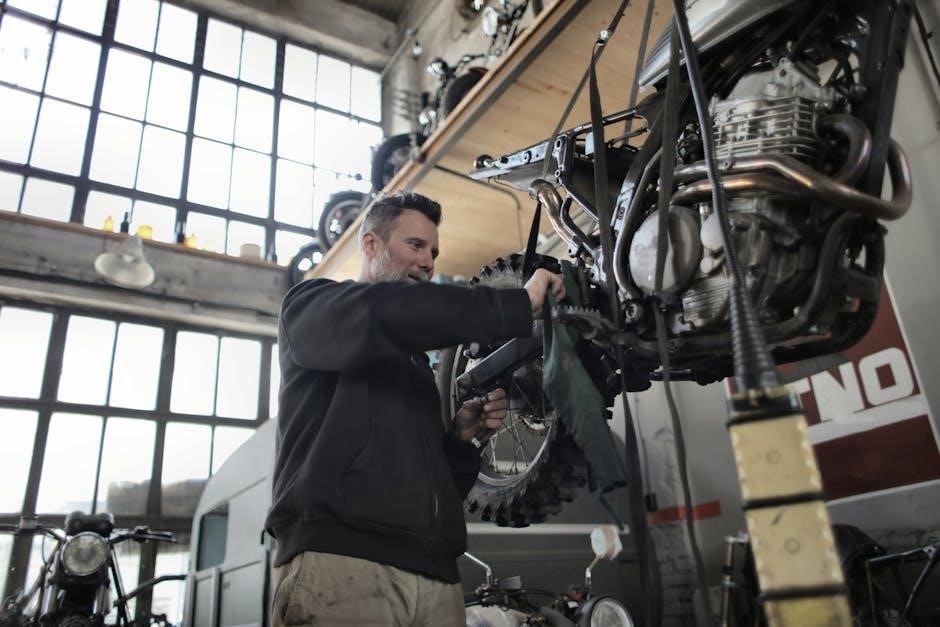
Coverage of Different Models (QuickLub‚ P203‚ etc.)
The Lincoln Auto Greaser manual covers various models‚ including the QuickLub and P203 systems‚ each tailored for specific applications. The QuickLub model is a progressive lubrication system known for its efficiency and even grease distribution‚ ideal for machinery with multiple lubrication points. It operates by dispensing grease sequentially‚ ensuring each point receives the correct amount. The P203 model‚ designed for versatility‚ offers features like adjustable timers and multiple grease outlets‚ making it suitable for a range of industrial needs. Both models emphasize ease of installation and maintenance‚ with features such as plug-and-play pump designs and centralized control systems. The manual provides detailed specifications‚ installation guidelines‚ and troubleshooting tips for each model‚ ensuring users can optimize their system’s performance. Whether for small-scale or large industrial operations‚ these models deliver reliable lubrication solutions.

Safety Guidelines and Precautions
- Always follow proper safety practices when handling grease and electrical components.
- Wear protective gloves and eyewear to avoid exposure to lubricants.
- Ensure the system is grounded correctly to prevent electrical hazards.
- Avoid over-tightening fittings‚ as this can damage the system.
- Keep the work area clean to prevent contamination of grease points.
- Refer to the manual for specific warnings and precautions for your model.
General Safety Precautions
When working with the Lincoln Auto Greaser‚ always prioritize safety to avoid accidents and ensure proper system function. Begin by disconnecting the power supply before performing any maintenance or repairs to prevent unexpected system activation. Wear protective gloves and eyewear to shield yourself from grease splatters and debris; Ensure the work area is well-ventilated to avoid inhaling fumes from lubricants. Never exceed the recommended pressure or flow rates‚ as this can lead to system damage or hazardous situations. Keep loose clothing and long hair tied back to prevent entanglement with moving parts. Avoid over-tightening grease fittings‚ as this can cause damage to the system or injury. Always follow the manufacturer’s guidelines for handling and disposing of grease and lubricants. Regularly inspect hoses and connections for signs of wear or leaks. Finally‚ consult the manual or a professional if unsure about any procedure to ensure safe and effective operation.
Handling Grease and Lubricants
Proper handling of grease and lubricants is crucial for the effective operation and longevity of the Lincoln Auto Greaser. Always use the recommended grade of grease‚ typically NLGI 2‚ to ensure compatibility with the system components. When refilling the reservoir‚ make sure the area is clean and free from contaminants to prevent debris from entering the system. Use a grease gun or pump specifically designed for the reservoir to avoid introducing air pockets‚ which can disrupt grease flow. Apply grease in small‚ controlled amounts to avoid over-lubricating‚ which can lead to waste and potential system clogs. Store lubricants in a cool‚ dry place away from direct sunlight and heat sources to maintain their viscosity and performance. Clean any spills immediately with a lint-free cloth to prevent them from attracting dust or dirt. Always refer to the product’s Safety Data Sheet (SDS) for specific handling and disposal instructions. Proper disposal of used grease and containers is essential to comply with environmental regulations. Regularly check the consistency and color of the grease; if it appears separated or discolored‚ replace it promptly to maintain system efficiency. Avoid mixing different types of grease‚ as this can degrade performance and damage system components. Use protective gloves and eyewear when handling grease to prevent skin and eye irritation. If grease comes into contact with skin‚ wash thoroughly with soap and water. In case of eye exposure‚ flush with water and seek medical attention if irritation persists. Proper ventilation is essential when working with lubricants to prevent inhaling fumes. Keep the work area clean and well-organized to minimize accidents and ensure smooth operation. Always follow the manufacturer’s guidelines for handling and disposing of grease and lubricants to maintain safety and system integrity.
Important Warnings and Cautions
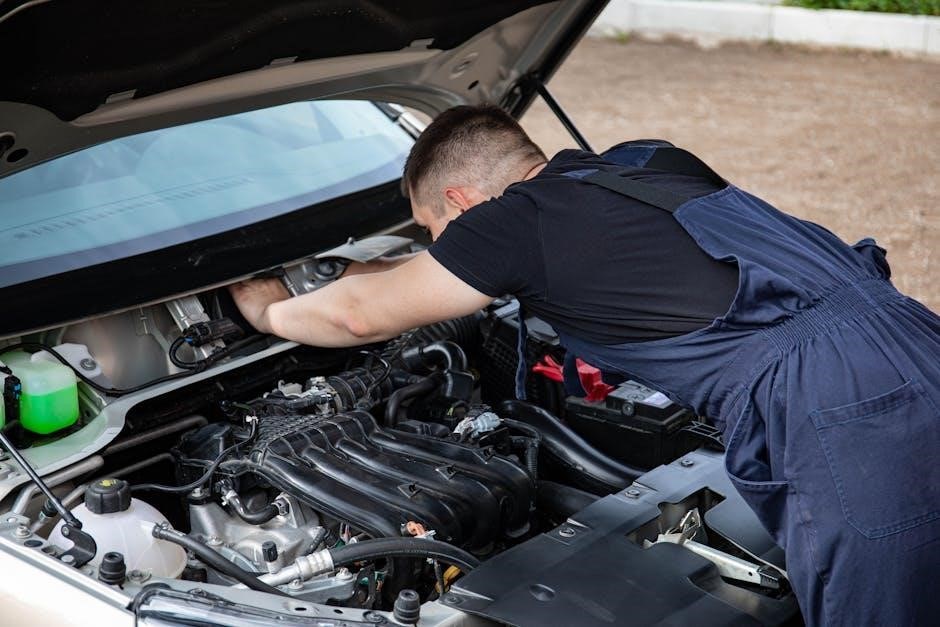
Important: Always follow the guidelines outlined in this manual to ensure safe and effective operation of the Lincoln Auto Greaser. Failure to adhere to these warnings may result in system damage or personal injury.
Never use grease that is not compatible with the system‚ as specified in the manual. Using the wrong grade or type of grease can lead to clogged lines‚ pump failure‚ or reduced system performance.
Avoid over-tightening grease fittings‚ as this can damage threads or restrict grease flow. Always ensure the system is turned off before performing maintenance or repairs to prevent accidental start-ups.
Do not mix different types of grease‚ as this can degrade performance and potentially damage system components. Always clean up spills immediately to avoid attracting contaminants.
Never bypass or disable safety features‚ such as pressure relief valves or timers‚ as this can lead to system overload or failure. Always refer to the Safety Data Sheet (SDS) for specific handling and disposal instructions for lubricants.
Keep the system away from open flames or sparks‚ as grease and lubricants can be flammable. Always ensure proper ventilation when working with grease to prevent inhaling fumes.
Failure to follow these warnings may void the warranty or result in costly repairs. Always consult the manual or contact a qualified technician if unsure about any procedure.

Installation of the Lincoln Auto Greaser
Proper installation involves wiring‚ mounting‚ and connecting components. Follow the manual’s wiring diagram‚ secure the greaser‚ and align hoses correctly for optimal performance and safety compliance.
Wiring Diagram and Electrical Connections
Always refer to the official Lincoln Auto Greaser wiring diagram provided in the manual for accurate electrical connections. Connect the red wire to a 12V power source and the white wire to ground. Ensure all connections are secure and meet the system’s voltage requirements. If your model has a blue wire‚ consult the manual for specific instructions‚ as its function may vary. Avoid overloading circuits and use appropriate gauges to prevent voltage drops. Incorrect wiring can lead to system malfunctions or safety hazards. Double-check connections before powering on the greaser. For models with advanced features‚ such as timers or sensors‚ ensure proper wiring to maintain functionality. Always disconnect power before making adjustments. Following the wiring diagram ensures reliable operation and longevity of the system. Proper electrical setup is crucial for optimal performance and safety.
Mounting and Aligning the Greaser
Properly mounting and aligning the Lincoln Auto Greaser is essential for efficient operation. Follow the manual’s guidelines to ensure the greaser is securely fastened to a stable surface. Choose a location that allows easy access for maintenance and is protected from extreme temperatures or vibrations. Use the provided mounting hardware and ensure the greaser is level to prevent uneven grease distribution. Align the grease reservoir and hoses correctly to avoid kinking or twisting‚ which can restrict flow. Tighten all bolts firmly but avoid over-tightening‚ as this may damage the mounting system. Double-check the alignment to ensure proper functionality. Correct installation ensures reliable performance and extends the system’s lifespan. Always refer to the manual for specific mounting instructions tailored to your model‚ such as the P203 or QuickLub systems. Proper alignment guarantees optimal grease delivery and minimizes wear on moving parts.
Connecting the Grease Reservoir and Hoses
Connecting the grease reservoir and hoses is a critical step in setting up the Lincoln Auto Greaser. Begin by ensuring the reservoir is properly seated and secured to the greaser unit. Next‚ attach the main grease hose to the pump outlet‚ making sure it is tightly connected to prevent leaks. Use the provided fittings to secure the hose to the reservoir inlet. For systems with multiple outlets‚ connect each hose to its respective grease point‚ ensuring they are not kinked or twisted. Apply a small amount of grease to the fittings before connecting to ensure a leak-free seal; After connecting‚ pressurize the system slightly and inspect all joints for leaks. Properly connected hoses ensure consistent grease flow and optimal system performance. Always refer to the manual for specific instructions tailored to your model‚ such as the P203 or QuickLub systems.
Setting Up the Timer and Controls
Setting up the timer and controls on your Lincoln Auto Greaser ensures automated and efficient lubrication. Start by powering on the system and navigating to the control panel. Use the digital interface to program the timer according to your equipment’s needs‚ setting specific intervals for grease distribution. Adjust the grease flow rate by accessing the settings menu‚ where you can customize the amount of grease dispensed during each cycle. Refer to the manual for model-specific instructions‚ such as entering a default password to access advanced features. Once programmed‚ run a test cycle to verify that the timer and controls are functioning correctly. Proper setup ensures consistent lubrication‚ reducing manual intervention and extending equipment life.
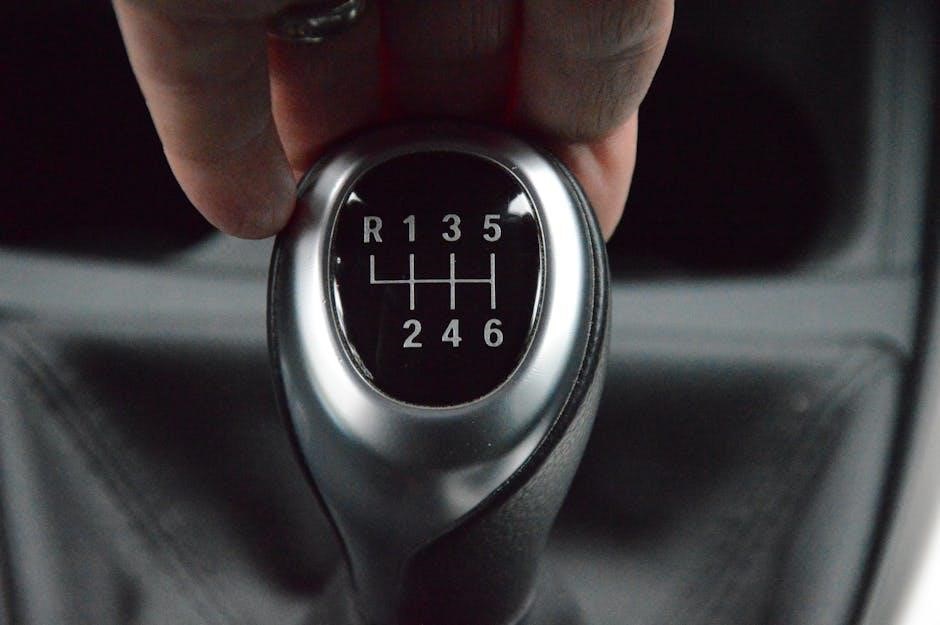
Maintenance Tasks for the Lincoln Auto Greaser
Regular maintenance ensures optimal performance. Inspect grease points and hoses for leaks‚ tighten fittings‚ refill the reservoir as needed‚ and test the pump and injectors for proper function.
Visual Inspection of Grease Points and Hoses
Regular visual inspections are crucial for maintaining the Lincoln Auto Greaser’s efficiency. Start by examining all grease points for blockages or wear. Ensure fittings are secure and free from damage. Next‚ inspect the hoses for signs of cracking‚ fraying‚ or leaks‚ which can compromise system performance. Pay particular attention to connections and bends‚ where stress is highest. Use a lint-free cloth to wipe down surfaces and remove any debris or grease buildup. If any damage or wear is detected‚ address it promptly to prevent system failure. This proactive approach ensures consistent lubrication and extends the lifespan of your equipment. Always refer to the manual for specific inspection intervals tailored to your model‚ such as the QuickLub or P203 systems.

Checking and Tightening Grease Fittings
Regularly checking and tightening grease fittings is essential for maintaining the Lincoln Auto Greaser’s performance. Begin by ensuring all fittings are clean and free from debris. Use a wrench to check the tightness of each fitting‚ but avoid over-tightening‚ as this can damage the threads. If a fitting feels loose‚ tighten it in small increments until it is snug. For models like the QuickLub and P203‚ refer to the manual for specific torque recommendations. Inspect the fittings for signs of wear or damage‚ such as cracked or stripped threads‚ and replace them if necessary. Properly secured fittings prevent leaks and ensure consistent grease flow. Consider using a torque wrench for precise tightening to avoid over-tightening‚ which can compromise the system’s integrity. Regular maintenance of grease fittings ensures reliable operation and extends the lifespan of your Lincoln Auto Greaser.
Refilling the Grease Reservoir

Refilling the grease reservoir is a straightforward process that ensures continuous operation of the Lincoln Auto Greaser. Begin by turning off the system to prevent any accidental grease discharge. Locate the reservoir‚ typically positioned on top of the greaser unit. Open the reservoir by removing the cap‚ usually found on the top or side‚ depending on the model. Use a clean grease gun or pump to fill the reservoir with the recommended type and amount of grease‚ as specified in the manual. Avoid overfilling‚ as this can lead to system malfunctions. For models like the QuickLub and P203‚ ensure the grease meets the NLGI grade and viscosity requirements. Once filled‚ replace the cap securely and turn the system back on. Allow the greaser to run through a cycle to distribute the new grease evenly. Regular refills prevent downtime and maintain optimal lubrication performance.
Testing the Grease Pump and Injectors
Testing the grease pump and injectors is essential to ensure proper system operation. Begin by ensuring the grease reservoir is adequately filled and the system is powered off. Activate the pump manually‚ if possible‚ to observe its performance. Check for any unusual noises or vibrations‚ which may indicate wear or damage. Next‚ inspect the injectors by triggering a grease cycle and observing the output. Ensure a consistent flow of grease from each injector‚ with no signs of leakage or blockage. If bubbles appear in the grease‚ it may indicate an air pocket in the system‚ requiring purging. Refer to the manual for specific purging procedures. Regular testing helps identify issues early‚ preventing system downtime and ensuring efficient lubrication delivery to all critical components. Always follow safety guidelines when handling grease and electrical components to avoid accidents.
Troubleshooting Common Issues
Common issues with the Lincoln Auto Greaser include electrical faults‚ pump malfunctions‚ and system leaks. Always refer to the manual for specific troubleshooting steps and safety guidelines.
Diagnosing Electrical Issues
Diagnosing electrical issues in the Lincoln Auto Greaser involves checking power and ground connections‚ ensuring proper wiring‚ and verifying the integrity of electrical components. Start by confirming that the red wire is connected to a suitable power source and the white wire is securely grounded. If the system fails to activate‚ inspect the wiring for damage‚ corrosion‚ or loose connections. Test the timer and control switches to ensure they function correctly. Consult the wiring diagram provided in the manual to identify any mismatched connections. Additionally‚ check the fuse or circuit breaker to rule out power supply interruptions. For advanced troubleshooting‚ use a multimeter to verify voltage at critical points. Addressing electrical issues promptly prevents system downtime and ensures reliable operation. Always refer to the manual for specific diagnostic procedures tailored to your model‚ such as the P203 or QuickLub systems.
Resolving Pump Malfunctions
Resolving pump malfunctions in the Lincoln Auto Greaser requires a systematic approach. First‚ check for air pockets in the pump inlet‚ which can disrupt grease flow. Disconnect the main delivery hose and run the pump until solid grease flows out‚ ensuring no bubbles. If the pump fails to activate‚ inspect the electrical connections and timer settings. Ensure the grease reservoir is not empty‚ as low grease levels can cause malfunction. Clean or replace clogged injectors‚ as they may block grease flow. If issues persist‚ refer to the troubleshooting section in the manual for specific guidance tailored to your model‚ such as the P203 or QuickLub systems. Regular maintenance‚ like refilling the reservoir and checking for leaks‚ helps prevent such malfunctions. Always follow safety guidelines when handling grease and electrical components to ensure safe and effective repairs.
Fixing Leaks in the System
Fixing leaks in the Lincoln Auto Greaser system is crucial to maintain efficiency and prevent contamination. Start by identifying the leak source‚ such as loose connections‚ damaged hoses‚ or worn seals. Tighten all fittings and check for overtightening‚ which can cause further damage. Inspect hoses for cracks or abrasions and replace them if necessary. Apply a small amount of grease to new seals before installation to ensure proper seating. Clean the affected area thoroughly before reassembling to prevent dirt from entering the system. If a fitting or connector is damaged‚ replace it with a genuine Lincoln part. After repairs‚ refill the grease reservoir and test the system under pressure to ensure the leak is resolved. Regular inspections and timely replacements can prevent future leaks and maintain system performance. Always follow safety guidelines when handling grease and electrical components.
Addressing Timer and Control Problems
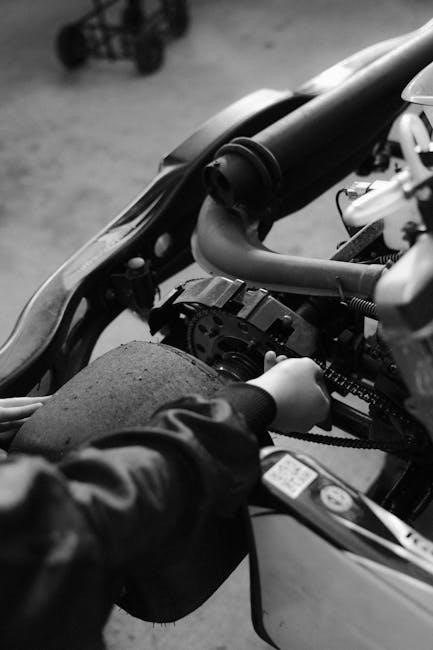
If the Lincoln Auto Greaser’s timer or controls malfunction‚ start by checking the power supply and ensuring all electrical connections are secure. Review the timer settings to confirm they are programmed correctly‚ as incorrect configurations can disable the system. If the timer is not activating‚ reset it according to the manual’s instructions or replace the timer module if it is faulty. For control issues‚ inspect the buttons or switches for damage or corrosion and clean or replace them as needed. If the system still doesn’t respond‚ check for software updates or perform a factory reset. Always use genuine Lincoln parts for replacements to ensure compatibility and reliability. Regularly testing the timer and controls can help identify issues early‚ preventing unexpected downtime. Refer to the troubleshooting section for additional guidance on diagnosing and resolving these problems effectively.
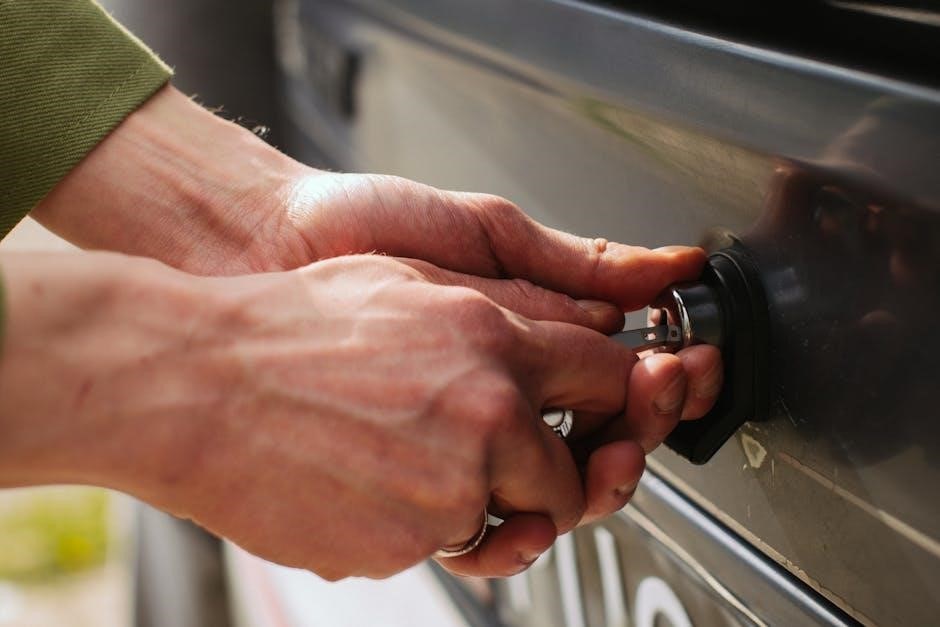
Optimizing Performance of the Greaser
Maximize efficiency by selecting the right grease type‚ adjusting flow rates‚ and ensuring proper system setup. Regular maintenance and timely refills enhance performance and extend equipment lifespan.
Selecting the Right Grease for Your System
Selecting the appropriate grease for your Lincoln Auto Greaser is crucial for optimal performance. The manual recommends using NLGI Grade 2 grease‚ which offers excellent lubrication properties and viscosity for most applications. It’s essential to ensure the grease meets the system’s specifications‚ as using the wrong type can lead to inefficiency or equipment damage. Factors such as operating temperature‚ load conditions‚ and environmental exposure should be considered when choosing the grease. Always refer to the manual or consult a professional to confirm compatibility. Proper grease selection ensures smooth operation‚ extends component life‚ and prevents premature wear. Regular maintenance‚ including grease replacement‚ is vital to sustain system efficiency and reliability.
Adjusting the Grease Flow Rate
Adjusting the grease flow rate on your Lincoln Auto Greaser ensures optimal lubrication for your equipment. Locate the adjustment mechanism‚ typically near the pump or control panel. Turning the knob or screw clockwise increases the flow rate‚ dispensing more grease per cycle‚ while counterclockwise decreases it. Start with small adjustments‚ such as a quarter turn‚ and observe the output over several cycles. Refer to the manual for guidelines on optimal flow rates based on grease type and system requirements. Additionally‚ synchronize with timer settings to maintain consistent lubrication intervals. Monitor the system for any issues like leaks or performance changes after adjustments. Fine-tune as needed to achieve the desired flow rate‚ ensuring efficient operation and preventing over or under-greasing. Regular monitoring helps maintain performance and longevity of your Lincoln Auto Greaser.
Improving System Efficiency
Enhancing the efficiency of your Lincoln Auto Greaser involves several key steps. Start by ensuring proper grease selection‚ as using the wrong viscosity can lead to suboptimal performance. Regularly inspect and clean the grease fittings and hoses to prevent blockages. Additionally‚ check the alignment of the grease injectors to ensure accurate delivery. Monitor the system’s operation during machine cycles to identify any irregularities. Adjust the timer settings to synchronize lubrication intervals with equipment usage patterns. Consider upgrading to a centralized lubrication system for streamlined operation. Finally‚ consult the manual for model-specific optimization tips. By implementing these strategies‚ you can maximize system efficiency‚ reduce wear on moving parts‚ and lower maintenance costs over time. Proper calibration and timely adjustments ensure the Lincoln Auto Greaser operates at its best‚ providing reliable lubrication for your equipment.
Integration with Other Lubrication Systems
The Lincoln Auto Greaser seamlessly integrates with centralized lubrication systems‚ offering plug-and-play compatibility and enhanced performance. Its design simplifies setup and ensures compatibility with existing equipment‚ reducing installation time and improving efficiency.
Centralized Lubrication System Setup
Setting up a centralized lubrication system with the Lincoln Auto Greaser ensures efficient and synchronized grease distribution across all lubrication points. This configuration reduces manual intervention and enhances system reliability. The process involves connecting the greaser to a central control unit‚ which monitors and regulates the flow of lubricant to various components. Proper installation requires aligning the grease reservoir‚ hoses‚ and injectors according to the system’s specifications. Additionally‚ integrating sensors and timers allows for automated operation‚ ensuring consistent lubrication intervals. The centralized system minimizes downtime and extends equipment lifespan by preventing over or under-lubrication. Regular maintenance‚ such as checking connections and reservoir levels‚ is crucial for optimal performance. This setup is ideal for industrial applications where multiple machinery components require precise lubrication to function effectively.
Plug-and-Play Pump Design Benefits
The Lincoln Auto Greaser’s plug-and-play pump design simplifies installation‚ reducing time and effort. This feature eliminates the need for complex wiring or adjustments‚ making it user-friendly for both novice and experienced operators. The plug-and-play functionality ensures quick integration with existing systems‚ minimizing downtime and increasing productivity. It also reduces the risk of installation errors‚ enhancing reliability and performance. This design supports scalability‚ allowing easy addition of new components or expansion of the lubrication system. The plug-and-play pump is compatible with various grease reservoir sizes‚ offering flexibility for different applications. By streamlining the setup process‚ it enables faster deployment and reduces the need for specialized tools or expertise. This innovative design makes the Lincoln Auto Greaser a practical choice for industries seeking efficient and hassle-free lubrication solutions.
The Lincoln Auto Greaser Manual is an essential resource for ensuring the optimal performance and longevity of your lubrication system. By following the guidelines‚ safety precautions‚ and maintenance routines outlined in this manual‚ users can maximize efficiency‚ reduce downtime‚ and lower operational costs. The system’s plug-and-play design‚ compatibility with various models like QuickLub and P203‚ and robust construction make it a reliable choice for industrial and automotive applications. Regular maintenance tasks‚ such as refilling the grease reservoir and inspecting hoses‚ are critical to preventing malfunctions. Troubleshooting common issues‚ like electrical problems or pump malfunctions‚ ensures minimal disruption to operations. Overall‚ the Lincoln Auto Greaser is a user-friendly and durable solution for automated lubrication needs. Refer to this manual regularly to maintain peak performance and extend the life of your equipment.
Comments (0)